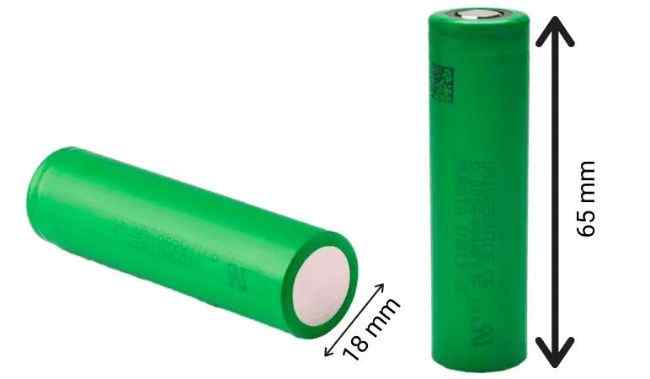Introduction:
The e-bike battery has a variety of types, offers different properties, materials and features. In this article, let us find the best e-bike battery for you.
An e-bike battery is a crucial component of e-bikes, providing the power needed for electrical assistance. Since 2023, the most commonly used types of batteries on the US market have been lead-acid batteries, nickel-cadmium (NiCd) batteries, nickel-metal hydride (NiMH) batteries and lithium-ion batteries.
When it comes to e-bike batteries, you’ve got two main options, that is lithium batteries and lead acid batteries. Of course, there are nickel-cadmium (NiCd) batteries, nickel-metal hydride (NiMH) batteries, but the two major types you will see everywhere are lithium and lead acid.
Lead-Acid E-bike battery:
Materials and Properties:
Lead acid batteries are the most ancient type of rechargeable battery. They are produced from lead electrodes submerged in a solution of sulfuric acid. These batteries are recognized for their ability to provide strong over-voltage currents.
Features and Control:
The lead acid battery is heavier and have a shorter lifespan than others. They generally need a dedicated charger to control voltage and prevent overload.
Pros and Cons:
Lead-acid batteries are generally more affordable than other types, but come with the cost of shorter lifespan and increased weight, making them less suited to portable applications such as e-bikes.
User Guide:
These batteries must be recharged after each use to extend their lifespan. Avoid deep discharges because they can decrease battery life. Batteries must also be maintained, clean and dry to avoid corrosion.
Nickel-Cadmium (NiCd) E-bike battery:
Materials and Properties:
NiCd batteries primarily use nickel and cadmium. They have a high discharge rate and a stable performance over a wide temperature range.
Features and Control:
NiCd batteries are lighter than lead batteries and withstand overload. But, they suffer from a “memory effect” – a phenomenon in which the battery “remembers” a smaller capacity if it is recharged repeatedly before it is completely discharged.
Nickel-cadmium batteries have a capacity, superior to that of lead acid, but not quite as strong as the other options. They can also last for a period of time if you give them the appropriate maintenance. But that battery tends to be more expensive, and cadmium is actually a pollutant.
Pros and Cons:
While NiCd batteries are rugged and can handle high levels of discharge. They are more expensive, as well as a lower energy density than other types, and are unenviable because of toxic cadmium.
User Guide:
Avoid partial discharges in order to avoid the memory effect. NiCd batteries can generally handle many charge cycles, but they must be recycled properly because of their toxicity.
A cat at the bus station staring the electric bike, dreaming powered by the e-bike battery:

Nickel-Metal Hydride (NiMH) E-bike battery:
Materials and Properties:
NiMH batteries are similar to NiCd batteries, but they use a hydrogen-absorbing alloy rather than cadmium. They offer an energy density, superior to that of NiCd batteries.
Features and Control:
Similar to NiCd batteries, NiMH batteries can withstand high discharge rates, but are less efficient at storing energy and can self-discharge faster.
The nickel-metal hydride batteries are stronger than either of the two types above, but they are quite complicated. They’re not durable and not really recommended for e-bikes.
Pros and Cons:
NiMH batteries are more ecological than NiCd batteries and have a higher energy density. However, they are more costly and can unload more quickly when not in use.
User Guide:
NiMH batteries may suffer from the memory effect, but not as much as NiCd batteries. They have to be stored in a cool place and can be charged after every use.
Lithium-Ion E-bike battery:
Materials and Properties:
Lithium-ion cells use a lithium compound as an electrode material. They have a high energy density as well as lightweight in comparison with other types of batteries.
There are various kinds of lithium-ion batteries available, including lithium, manganese, lithium cobalt and lithium-ion polymer, while each with their own benefits and disadvantages.
Features and Control:
The lithium – ion battery has no memory effect as well as have a low self-discharge rate. They need a battery management system to avoid overload or discharge.
Durable and powerful, albeit costly, but they are everything you need for your electric bike.
Pros and Cons:
Lithium-ion battery is the best e-bike battery in the market because of their lightweight, high energy density and long service life. However, they are more costly and may pose a fire hazard if damaged or improperly charged.
User Guide:
Avoid deep discharges and extremely high temperatures to extend the battery’s lifespan. Lithium-ion batteries should be recharged regularly, even when not in use, to prevent them from dropping below their minimum voltage.
E-bike battery helps every mom travel effortlessly to get everywhere:

Which is better lithium or lead acid e-bike battery?
Lithium-ion batteries are more advanced, and much lighter (5X) than those powered from lead-acid. Lithium-ion batteries have a slower discharge rate than lead-acid batteries and thus have a much shorter storage life.
The lithium-ion battery has many advantages such as longer lifetime, higher yields, and higher energy density so that most of the brands chosen for the installed.
Lithium-ion batteries last 3 to 4 times longer than lead-acid batteries, and do not lose their efficiency over time. The price of a lithium-ion battery is certainly double that of a lead-acid battery of similar capacity.
A Lead Acid battery question and answer posted on the Quora for your reference:
Question:
Do deep cycle, high capacity lead acid batteries for electric bikes make sense, if weight is not an issue, but cost and range are a concern?
Answer:
No they don’t, cost and range are a concern, weight translates into both so even if you say it isn’t an issue it is. They are actually expensive, even deep cycle, you can’t discharge to 100%. While the lithium battery isn’t that much more expensive for an equal range of lead acid battery.
Find top brands of e-bike battery:
Who is CATL?
CATL is the world’s leading manufacturer of EV batteries. While they have traditionally focused on batteries for large electric cars and larger EVs, the company has added e-bike packs to its product list.
CATL has invested approximately US$140 million in a joint venture to produce electric bike batteries. Increasing the offer of electric bike batteries on the market could lead to lower prices for e-bike OEMs. Those savings would probably be passed on to the consumers.
Global top 8 e-bike battery brands:
- Contemporary Amperex Technology Co., Ltd. – (CATL).
- LG Energy Solution Ltd. Founded: 2020.
- BYD Co., Ltd. Founded: 1995.
- Panasonic. Founded: 1918.
- SK Innovation Co., Ltd. Founded: 2007.
- Samsung SDI Co., Ltd.
- China Aviation Lithium Battery Co., Ltd.
- GUOXUAN High-tech Power Energy Co., Ltd.
What 18650 battery brand is best for an e-bike?
- CATL produced high-quality 18650 lithium-ion. They are among the best piles in the market with attractive prices.
- Panasonic 18650 lithium-ion cells are popular in the marketplace. They are renowned for their quality, price and performance.
- Samsung 18650 cell is trusted by many e-bike brands because of its high quality and reliability.
- LG 18650 cell is a better choice for e-bike brands due to its high energy density and long life.
- BYD cells are a China brand, but are known for their good quality and good prices.
Types of 18650 e-bike batteries:
Two types of 18650 batteries exist: protected and unprotected. Generally speaking, we always recommend the use of 18650 protected batteries. 18650 protected batteries have an integrated electrical circuit.
The dimension of 18650 e-bike battery cell:

FAQs for E-bike Battery:
- Which battery is preferred for EV?
- Most EV use lithium-ion batteries.
- Are all e-bike batteries the same?
- Electric bike batteries vary depending on their operating voltage and ampere-hours (capacity), as well as the battery configuration and location on the bike.
- Is a higher Ah battery cell having better quality?
- A high Ah battery rating does not mean high power to e-bike. But, it means there is a high number and density of cells, providing current for extended travel range.
- Is it OK to leave my e-bike on charge overnight?
- Yes, you can leave your electric bike battery charging overnight because the battery management system helps to prevent overcharging.
- What affects e-bike battery life?
- Do not let the battery charge drop too low, and avoid re-charging it too often when unnecessary.
- At what voltage is a 48V battery?
- When you charge a 48v battery, it is actually fully charged to 54.6 volts.
- When it is empty it will be somewhere around 40-41 volts.
Conclusion:
Generally, for all types of electric bike batteries, avoid exposing them to extreme temperatures and don’t forget to turn off the battery when not in use. Regular maintenance and proper charging and discharge practices will ensure a longer life of your electric bike battery.
The new e-bike batteries are often packaged with efficient fire-resistant housings and battery management systems, thus making them much safer than the old lithium battery options.
It is often not necessary to let your e-bike languish because of a dead battery; replacements can breathe new life into your e-bike. Of course you can opt for a new e-bike if you wish.
Hi! Friend, Happy Navigation Here:
Shop Amazon best seller product here:
“As Amazon associates, I earn from any qualifying purchase.”
First Aid Only 442 All-Purpose Emergency First Aid Kit for Home, Work, and Travel, 298 Pieces – Click, Shop, Happy.
Engage with me!
Ask Questions: Do you have any questions? Please leave them in the comments below! Also, please share this post with your friends and family on social media—I appreciate it!
Welcome to Share on Pinterest – Click Link Here.
Share on Twitter – Click Twitter Link Here.
Please Share on Facebook – Click Facebook Links Here.



Thank you for your comprehensive article on different types of e-bike batteries and their features. Your detailed explanations provide valuable insights for anyone looking to understand and choose the best e-bike battery for their needs.
I appreciate that you covered a range of battery options, including lead-acid, nickel-cadmium (NiCd), nickel-metal hydride (NiMH), and lithium-ion batteries. By highlighting their materials, properties, features, and pros and cons, you have given readers a clear understanding of each type.
Your emphasis on lithium-ion batteries as the most commonly used and preferred choice for e-bikes is particularly helpful. Explaining their advantages such as longer lifetime, higher energy density, and lightweight nature, along with considerations like proper charging practices and avoiding extreme temperatures, offers practical advice for users.